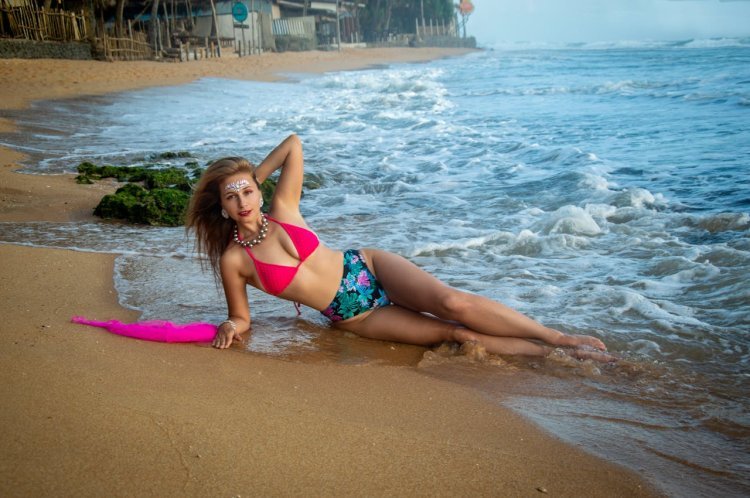How to Find Swimwear Manufacturers—and Turn Them into Long-Term Partners (3 Key Moves)
Launching a swimwear brand? Learn how to choose the right manufacturer and build long‑term partnerships—covering capability fit, due diligence, and operating systems.

Bringing a swimwear label to life takes more than a great design and a moodboard. Swimwear is technical: stretch fabrics, recovery, colorfastness, and fit can make or break your brand. Below are three focused moves to help you identify the right manufacturing partner and grow the relationship into a durable competitive advantage.
Match your product vision to factory capabilities
Start by defining exactly what you’ll make and what it must do. Then evaluate factories against those requirements.
• Technical specialization: Look for experience with swim-specific materials (e.g., nylon/spandex blends), lining, bonding, seamless finishes, underwire construction, digital printing, and elastic placement. Ask for recent styles they’ve produced that are similar to yours.
• Sampling & fit proficiency: Your partner should turn tech packs into accurate proto and fit samples quickly, provide pattern grading across sizes, and accommodate multiple fit rounds without losing detail.
• Quality & compliance: Verify processes for colorfastness (chlorine/salt/sunscreen), UV resistance, stretch-and-recovery tests, AQL inspection methods, and fabric certification (e.g., OEKO-TEX). If you plan on recycled fibers, confirm traceability and consistent hand-feel.
• Operational fit: Confirm MOQ (minimum order quantity), lead times, capacity during your seasonal peaks, and shipping terms. A good sign: transparent timelines for proto → SMS → PP sample → production, with clear owners at each step.
Source widely—then run rigorous due diligence
Cast a wide net, and then shrink the list with structured comparisons.
• Where to find candidates: Industry trade shows, sourcing platforms, referrals from fellow founders, and regional clusters known for swimwear. Aim for 5–8 prospects so you can compare apples to apples.
• Apples-to-apples RFQ: Send an identical package to each swimwear factory: tech pack, BOM, estimated units, target price, quality standards, packaging specs, and delivery window. Ask for a cost breakdown (fabric, trims, print, cut-make, overhead, and margin).
• Sample and stress-test: Pay for a proto. Evaluate stitch quality, print alignment, panel symmetry, seam stretch, and recovery after wash. Record findings in a simple scorecard (fit accuracy, craftsmanship, communication speed, on-time sample delivery).
• Audit the shop floor: A virtual or on-site walk-through should show cutting controls, fabric storage (humidity/UV protection), in-line QC checkpoints, final inspection, and packing standards. Ask about corrective-action logs from past defects.
• Check references & risk: Request two brand references. Review payment terms, currency exposure, and lead-time buffers. Start with a pilot (small run) to debug real production before scaling.
Build partnership systems—not one-off orders
Long-term success comes from shared structure and incentives.
• Clear agreements: Use an MSA plus PO terms: specs ownership, confidentiality/IP, grading rules, shrinkage tolerances, change-order protocol, rework/chargeback terms, and Incoterms. Define what “approved” means for lab dips, strike-offs, and PP samples.
• Operating rhythm: Set a weekly checkpoint (15–30 minutes) during development and a biweekly cadence during production. Track KPIs: on-time delivery, first-pass yield, defect rate, sample lead time, and cost variance. Visualize these in a simple shared dashboard.
• Quality playbook: Document stitching specs, seam allowances, bartack placements, and measurement tolerances, labeling, and packing. Include a photo-rich defect library so inspectors and line leaders share the same standard.
• Forecasts & incentives: Provide rolling 90–180 day forecasts, commit to capacity blocks, and negotiate tiered pricing as volumes rise. Consider vendor-managed fabric or pre-booked grieve to cut lead times.
• Dual-sourcing sensibly: Keep a backup for risk management, but make one factory your “design center” to preserve institutional knowledge and consistency.
The “right” swimwear manufacturer is the one whose capabilities match your product, whose processes you’ve verified through samples and audits, and with whom you build repeatable systems. Do that, and each season gets smoother, faster, and more profitable.
What's Your Reaction?

































